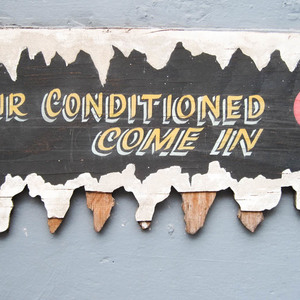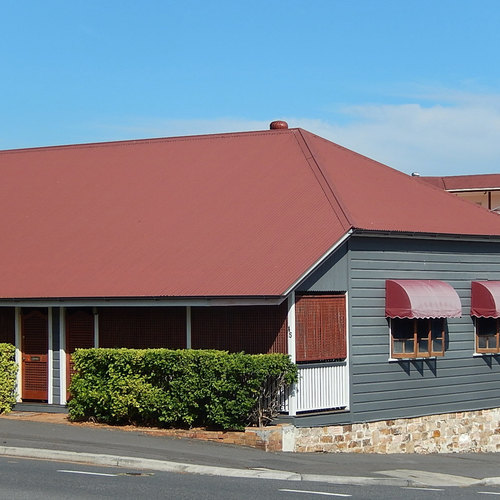
If you have traveled to the tropics or Mediterranean, you may have noticed the predominance of light-colored walls. Solar-reflective, or cool walls, have always existed with light-colored exterior finishes. These colors reflect a broad spectrum of solar rays, so buildings don’t heat up as much as they would with conventional darker colors. The technology has evolved, with darker pigments—even black—offering similar benefits by reflecting solar rays in the invisible, ultraviolet and near-infrared light spectrum. High-performance builders sometimes express skepticism about the benefits of cool wall systems when applied to a highly insulated structure. This skepticism is well-founded since solar reflectance plays a minor role in the indoor comfort of a well-insulated home. Yet indoor comfort and energy savings represent only one part of the cool wall equation.
Beyond the obvious benefit of reflecting sunlight to avoid heat gain, cool wall technology reduces heat island effects, cools the atmosphere, enhances the function of reflective pavements, and reduces the amount of water needed for irrigation. A neighborhood implementing cool wall technology will remain noticeably cooler than a conventional community. Building code writers have started to take notice.
Currently, the Cool Roof Rating Council (CRRC) is developing a cool wall rating program that will provide scientific methods to evaluate and label walls the same way the council now marks the solar reflectivity of roofing. Several green building programs already recognize the heat island and global cooling benefits of solar reflective rooftops. ASHRAE Standard 90.1 prescribes minimum roof solar reflectance for commercial buildings in some U.S. climates. The 90.1 envelope subcommittee is considering improvements to and expansion of cool wall prescriptions, but nothing has been decided yet.
According to a 2019 research paper published by the U.S. Department of Energy’s Lawrence Berkeley National Laboratory (Berkeley Lab), the environmental benefits of cool walls…
Weekly Newsletter
Get building science and energy efficiency advice, plus special offers, in your inbox.

This article is only available to GBA Prime Members
Sign up for a free trial and get instant access to this article as well as GBA’s complete library of premium articles and construction details.
Start Free TrialAlready a member? Log in














16 Comments
Are the retroreflectors made to only retroreflect from light sources coming from one side (namely, from above)? If they aren't, it seems like traffic through a city/neighborhood at night would become more hazardous if all the buildings are retroreflective--at least for pedestrians and cyclists, but probably motorists too. Or, would this property only be used at heights that would not affect traffic (say, 10ft or more above street level)?
“[Deleted]”
Hi Paul, as far as I understand, the retroreflector ends light back UP into the atmosphere, so I do not imagine it acting as a bicycle reflector at ground level. Right now, this material exists only for skyscraper windows.
Thanks, and I should say, great article. I think I stretched myself to find a question to ask because every time there was a technical detail where I started to think "but what about...", it was answered to my satisfaction within the text.
Great, that's what we strive for. Good to know we can accomplish it from time to time. Thank you for saying so.
This note came to me by LinkedIn from a reader:
That was an excellent article. It really covered the topic in great depth. I am passing it along here to our team to figure out ways we might promote it. As you note, the light-colored vinyl siding will reflect a lot of the incoming solar radiation to create a cool wall. We will certainly look into the accreditation of Cool Wall once complete. In California, there was a HERO certification that stipulated the allowable solar reflectances. We had a bunch of our products certified to that standard and promoted it in California. We also utilize IR reflective pigments in our products. As you know, getting darker colors that reflect the IR is highly desired. Both from an environmental perspective, but also from a vinyl performance perspective. As consumers have pushed for darker colors the performance challenge on vinyl has gotten larger. We have trademarked our bundle of technologies that we apply on all of our mid and dark colors as Chromatix. One of the key elements of that is IR reflective pigments. Our Chromatix tagline is Preserves Your Color, Protects Your Investment. It focuses on the performance challenge.
CJ
Chris J Johnson | Director – Product & Marketing, Royal Building Products
Great article, lots of cool and interesting developments in "cool" roofs and walls.
I can't wait to for more wall coverings to be developed and then released. I have the perfect application, the south wall of my house has no glazing (I designed it that way on purpose because I live in N. Texas and we have an exceptionally long cooling season) and is burgundy metal R-panel. It's a large burgundy wall and it bothers some people because the only thing on it is the grey garage doors, so a new wall covering may be necessary at some point to appease my husband since it doesn't bother me at all. Using the wall coverings to make it a cool wall would appease us both. All other sides of the house are almost completely shaded.
If I add a very inexpensive radiant barrier (ie, aluminum foil-based products), will I get similar benefits? There are foil-backed foam sheets, foil-faced sheathing, rolls of foil stapled to undersides of rafters, etc.
As for California cities 'running out of water', there's a simple, cheap solution - divert some of the (subsidized) water from farms to more productive parts of the economy (California agriculture uses 94% of the water but only generates 6% of state GDP - an insanely inefficient use of water - idiotic to be flooding orchards/fields or growing rice in the middle of a desert).
You may have some reflection of heat with the foil sheets, but it's inside, under the framing, so, no, they would provide no light reflectivity at all. I will ask and come back when I have a reply.
I asked Barkly Labs but never got a reply. If I did, I would presume they would say they could not, not having studied the issue. Sorry, Granular, I tried.
>I asked Barkly Labs but never got a reply. If I did, I would presume they would say they could not, >not having studied the issue. Sorry, Granular, I tried.
I feel like Barkly Labs has gone to the dogs.
Good to see this interest in cooler building design and energy saving.
Another option being used is porous pavements for driveways, sidewalks, roadways, paths and other paved surfaces. Porous pavement is much cooler, much less heat island, than normal and has many other benefits. Detoxify runoff, infiltrate runoff, much less flooding, lower cost, longlasting, much lower noise, much less salt use, less plowing, no black ice and much better traction just to name some of the benefits. A U of MI parking lot built recently in Ann Arbor can handle 1,300 inches an hour rainfall. 40% of our runoff is off city streets. Global Warming is causing much bigger rain events and this is an effective solution for heat island, noise control, polluted runoff, energy-saving and flood mitigation.
Interesting--the idea is that the permeable pavement holds water and you get evaporative cooling. This works best in a climate where the seasons with rain and cooling requirements overlap, Michigan being a good example of that.
Cool Walls Are Here. I received the following press release announcing the approval of the program and one industry's embrace:
Cool Roof Rating Council (CRRC) Board of Directors affirmed the organization’s commitment to urban heat island mitigation and building energy efficiency in its approval of a new CRRC rating program for exterior wall products on September 24, 2020. The anticipated launch of the new CRRC Wall Rating Program is early 2022.
Much like the CRRC Product Rating Program for roofing products that have been in operation since 2002, the CRRC Wall Product Program will be the first rating system in the world for exterior wall products. The CRRC is working in collaboration with industry and end-users on the development of the program, including the testing and weathering protocols that are appropriately suited for exterior paints, vinyl siding, and other wall claddings.
Hi Fernando, I am building a currently building a house and I'm using many of the principles from your book. Im really glad I purchased it as it is saving me a lot of money.
My current house has a bright white metal roof and bright white exterior walls. The roof in particular saves a lot of money in Dallas tx, so for my new house I ordered a bright white metal roof as well.
Im a little confused on the walls though. I modelled the house in BEopt 2.8 and it actually shows LESS total energy consumption with black walls (solar absorption of .9) vs white walls (solar absorption of .1)
Im really confused because we like dark colored walls but want to be energy efficient as well.
Dallas texas has almost the same cooling degree days as it has heating degree days
Good Morning Max E. From an energy perspective, cool walls and even roofs have a lower impact on high-performance homes. The environmental benefits remain. In your case, I would guess that heating costs have to with the difference in modeling. Maybe your software does not take the cooling benefits into account of a reflective wall but does factor in the thermal mass effect of a warmer surface. I know BEopt, but not the intricacies of how the program factors various inputs. However, most energy software has a northeastern origin and cold-weather bias.
Log in or become a member to post a comment.
Sign up Log in